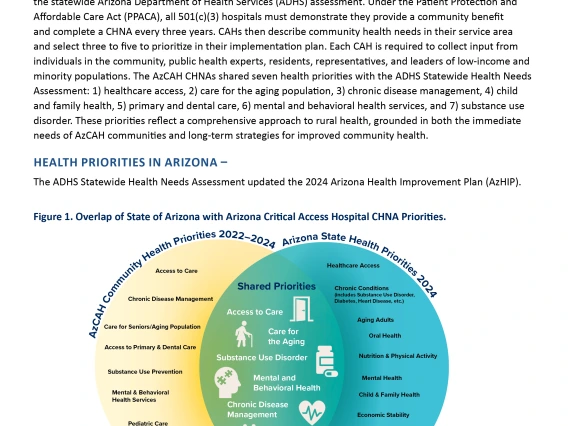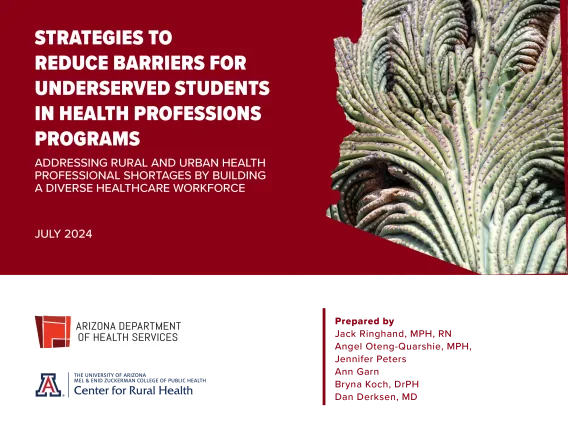

AzCRH Studies & Assessments
- Public Health System Capacity in Arizona: Learning from the COVID-19 Pandemic Response. (2023)
- Arizona Critical Access Hospitals: Community Health Needs Assessment (2023)
- Arizona Critical Access Hospitals: Community Health Needs Assessment (2022)
- Pathways to Improve Arizona's Public Benefits Enrollment Report (2022)
- Reflections of the COVID Response, Arizona Rural Health Conference (2022)
- Rurality is Associated with Increased Drive Times to Opioid Treatment Programs in Arizona
- Rural Health Outcomes and Infrastructure in Arizona (2019)
- 2016 Arizona Statewide Emergency Medical Services Needs Assessment (ASENA)
- AzCRH 2015 Safety Net Health Care in Arizona Report

